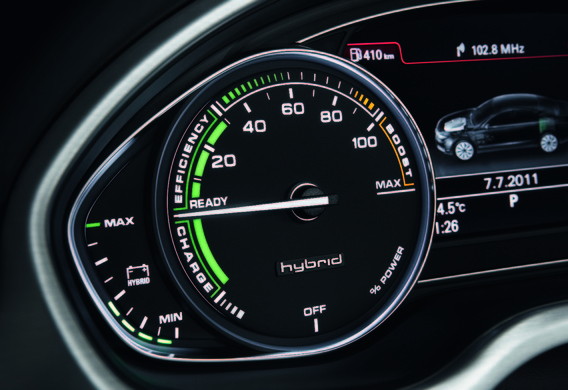
In vehicles with a parallel hybrid scheme, the driving wheels are driven by the internal combustion engine and the electric motor operated independently of each other.
Parallel Drive Diagram Device
In a parallel hybrid drive scheme, the electric motor can operate as a generator, since the internal combustion engine, which is the main propulsion system, is fully autonomous and can drive the vehicle without electric motor. The energy storage device, as in the serial transmission circuit, performs the same energy storage function from the generator and the energy generated by the regenerative braking.
When the internal combustion engine is operating, the torque failures and the unevenness of its work shall be compensated by the electric motor. The electric motor provides fuel savings and the easing of the move using the energy of the drive. At small speeds, the vehicle motion is possible only from the electric motor, down to the speed set when the internal combustion engine starts to operate in parallel.
Advantage and disadvantages of parallel hybrid drive
The parallel hybrid drive has high efficiency, relatively inexpensive and has the advantage of small dimensions.
The disadvantages of the schema can be attributed to the limitations of the layout which it imposes, the falsity of mechanical coordination between the DSC and the electric power train
Need for the use of special design CAT
The issue of the harmonization of the work of the IVS and the electric power train can be resolved by ensuring that the time is transmitted to different axles (wheels). But such a reception is not always possible due to the conditions of the placement of traction equipment and the balance of mass of the car.
Deficience of the parallel drive is to include the unstable work of the DSC, which in comparison with the consistent scheme, has the worst indicators for emissions of harmful substances.
Parallel hybrid system scope
The hybrid-drive parallel circuit justifies itself on vehicles operating on medium and light traffic. In such regimes it is possible to obtain fuel savings during braking, in turns, on downturns, etc. The hybrid parallel circuit can only be used with engines where a rotating shaft (LAN) is present and is not suitable for alternative energy sources.
Parallel Drive System Management
Computer management is used to align the work of both the engine and the electric motor with the parallel hybrid drive. The scheme requires the presence of a transmission and therefore the internal combustion engine has to operate in transient inefficient modes.
Depending on the traffic conditions, the two sources are distributed in different ways. Thus, during the transition modes (start, acceleration) the electric motor is connected to the help of the WAN, and when the car is stopped, and in the established regimes, the electric motor works to charge the battery as a generator.
Therefore, the parallel transmission of the DMF works much of the time, and the electric motor only connects to its help. In this connection, hybrid systems with parallel transmission can be equipped with a battery of smaller capacity relative to the serial transmission.
The power loss in parallel is much less than the serial hybrid because the DMF has direct contact with the wheels. In the background, there is a fairly simple design in the parallel drive. This is because the electric motor is unable to drive the wheel at one time and to charge the battery.
Hybrid cars with parallel transmission are not efficient when used in the city, but are quite efficient in the trace mode. The simplicity of the scheme in its implementation makes it possible to fully improve the efficiency of the use of the LAN and its environmental parameters.
A visual representative of vehicles with hybrid parallel drives is Honda, where the hybrid Integrated Motor Assist system is used. The system is primarily designed to create a petrol engine with increased efficiency. The electric motor comes into operation only when it becomes difficult for the engine to cope with the load.
In such a work arrangement, the parallel drive system does not require expensive and complex control units, which has a positive effect on the cost of the car.
This system consists of a petrol engine, an electric motor that provides additional power and an additional battery for the electric motor.
During the deceleration of the vehicle with conventional internal combustion engine, the kinetic energy shall be extinguked by the engine or dissipated in the form of thermal energy when heated brake drums or brake discs.
The parallel hybrid system starts to brake with the electric motor, which simultaneously generates electricity while working as a generator. Saved braking energy is stored in the battery. At the next acceleration of the car, the accumulated energy of the battery goes to the electric motor, newly starting to perform its traction functions. The fuel consumption will be reduced by the amount of energy available in the battery at previous brake applications.
Honda believes that the parallel hybrid scheme should be the maximum simplicity, and the task of the electric motor is to save the maximum amount of fuel. The company produces at least two models with hybrid parallel drive: Sivic and Insight.







